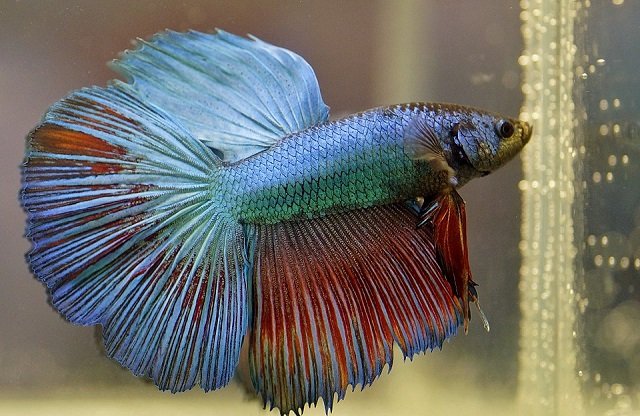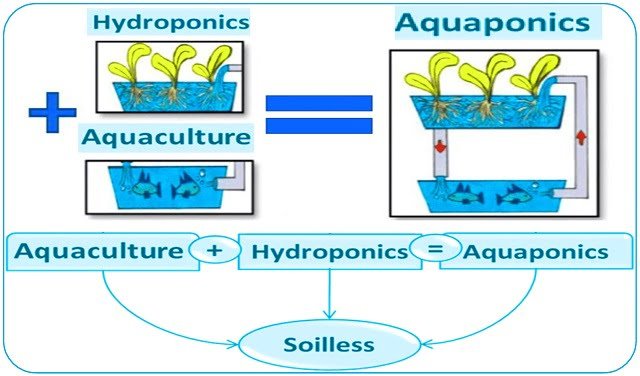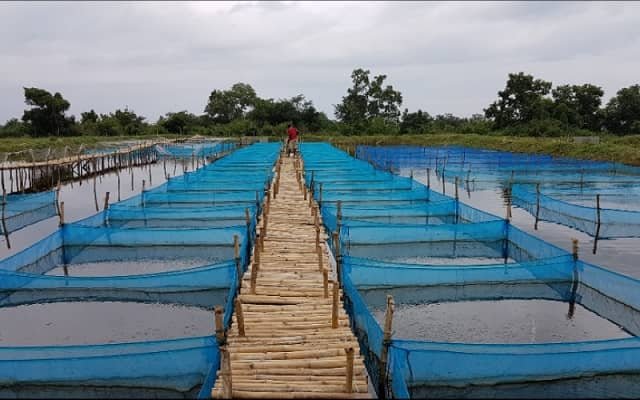
The triploid trout has revolutionized the fields of aquaculture, fishing, and conservation. Triploidization offers several advantages (e.g., sterility) and is thus routinely applied in the aquaculture of various commercially important fish species, including rainbow trout (Nynca et al., 2022).
These trout are unique not only because of their creation process but also due to the benefits they provide in aquaculture, fisheries management, and their controlled environmental impact. In this article, we delve into what triploid trout are, their benefits for aquaculture and conservation, how they are produced, identified, and why they are so valuable.
What is a Triploid Trout?
A triploid trout is a fish that possesses three sets of chromosomes instead of the two sets found in normal (diploid) trout. A comparative transcriptomic analysis of the ovaries of triploid (3N) and diploid (2N) female rainbow trout by Nynca et al. (2022) revealed a total of 9,075 differentially expressed genes.

It is important to highlight that triploidy is not a genetic modification process. In genetic modification, genetic material is altered, often introducing desired traits from the DNA of other organisms. In the case of triploids, no genetic material has been manipulated; rather, an additional set of the existing genetic material is present.
A triploid trout is sterile, meaning it cannot reproduce as it is unable to produce functional gametes.
How Long Does a Triploid Trout Live?
The lifespan of triploid trout can vary depending on various factors such as environment, genetics, and farming conditions. Research shows that under optimal aquaculture conditions, triploid trout can live up to 1 to 2 years. In natural environments, their lifespan may be shorter due to environmental pressures and predation.
Diploid vs. Triploid Trout
Triploid and diploid trout differ significantly in several key aspects, though both have their roles in aquaculture and recreational fishing. Triploid trout, with three sets of chromosomes instead of two, are sterile, preventing reproduction. This trait is advantageous in aquaculture because the energy and nutrients that would typically go toward reproduction are redirected to somatic growth, resulting in larger size and better meat quality. Additionally, triploid trout prevent hybridization with wild populations, helping to protect genetic diversity.
Table 01: Comparison Between Diploid and Triploid Trout.
Stay Always Informed
Join our communities to instantly receive the most important news, reports, and analysis from the aquaculture industry.
| Criterion | Diploid Trout | Triploid Trout |
| Number of Chromosomes | Two sets of chromosomes. | Three sets of chromosomes. |
| Fertility | Fertile, can reproduce. | Sterile, cannot reproduce. |
| Production | Produced naturally. | Produced through thermal or pressure shock, without genetic modification. |
| Size | Normal growth. | Debate on increased growth; potential advantages due to energy not being spent on reproduction. |
| Use in Fishing | Can hybridize with wild populations. | Useful for restocking without hybridization risks with native populations. |
| Conservation Considerations | Higher risk of genetic introgression with wild populations. | Reduces risk of genetic introgression; promotes conservation. |
Benefits of Triploid Trout
Accelerated Growth
Triploid trout can grow as much or even more than diploid trout. This is because they do not expend energy on reproduction, redirecting it toward growth. However, the size difference between triploid and diploid trout is a topic of debate. Some studies have found no significant differences, while others have.
Crouse et al., (2023) evaluated the performance, processing, and fillet composition of six lines of rainbow trout (Oncorhynchus mykiss), three diploids and three triploids, raised in a semi-commercial recirculating aquaculture system (RAS). They concluded:
- Growth was influenced by genetic line, ploidy, and manipulation of artificial winter photoperiod. Diploid trout and those exposed to an artificial winter photoperiod (AWP) were smaller at the start and at 500 g compared to triploids and those without a winter photoperiod (NWP). However, the average weight of diploids and triploids was similar at sizes over 1 kg. The performance of triploid trout compared to diploids varied depending on the commercial supplier.
Çimagil, y Sonay (2024) compared the growth performance and smoltification process of triploid and diploid Black Sea trout (Salmo labrax) in freshwater and seawater, concluding that triploid groups showed greater length, weight, and specific growth rate (SGR) in both environments.
In summary, the growth rate of triploid trout can vary depending on factors such as the method of triploidy induction, trout genetics, farming conditions, and the fish’s life stage. Studies have shown that triploid trout may grow similarly to or even faster than diploid trout at certain stages, although the overall picture is complex and not always consistent.
Weber et al., (2014) reported that induced triploid trout (3NP) may exhibit slower initial growth than diploids (2N). However, once diploid trout reach sexual maturity, their growth slows, and triploids may surpass diploids in terms of growth and body weight.
Prevention of Hybridization
The sterility of triploid trout prevents them from hybridizing with wild trout populations. This is crucial for protecting the genetic integrity of native species, as hybridization can lead to the loss of genetic diversity and reduced fitness in wild populations. Since they cannot reproduce, triploid trout do not contribute to genetic mixing.
Pease et al., (2023) highlighted that triploid rainbow trout represent an important tool for fisheries managers facing increasing threats to wild salmonid populations.
Disease Resistance
Kuciński et al., (2025) reported that triploid hybrids of rainbow trout (Oncorhynchus mykiss) and brook trout (Salvelinus fontinalis) may have greater resistance to diseases such as viral hemorrhagic septicemia (VHS) and infectious hematopoietic necrosis (IHN).
Higher Fillet Quality
Janhunen et al., (2019) reported that triploid trout maintained higher slaughter yields (eviscerated weight and fillet weight) compared to sexually maturing diploid trout, particularly during winter months. Additionally, triploid trout consistently maintained high fillet redness throughout the study period, while maturing diploid trout experienced a significant decrease in fillet redness during winter.
Similarly, Crouse et al. (2023) noted that sexual maturation in diploid trout may have caused differences in fillet lipid content (10.9 ± 0.8% vs. 13.3 ± 0.6%) and moisture (67.0 ± 0.6% vs. 65.1 ± 0.4%) between diploids and triploids. Baki y Öztürk (2023) compared the fatty acid composition in different tissues (fillet, liver, gonad) of rainbow trout (Oncorhynchus mykiss) with different ploidy levels (triploid and diploid) and sex (female and male) during the spawning season, concluding that ploidy affects the biochemical and fatty acid composition of rainbow trout.
Kuciński et al. (2025) found that triploid hybrids of rainbow trout (Oncorhynchus mykiss) and brook trout (Salvelinus fontinalis), especially those with a Sa-l phenotype, have high commercial value due to their salmon-like appearance and late or complete sterility.
Fisheries Management
Preston et al., (2017) suggested that restocking triploid brown trout (Salmo trutta) in freshwater ecosystems, particularly at elevated temperatures, may offer an alternative to diploid trout, considering their higher feed intake and potential for greater growth.
Challenges Associated with Triploid Trout
- Deformities: Weber et al. (2014) and Janhunen et al. (2019) reported that triploid trout have a higher rate of vertebral deformities compared to diploid trout. These deformities can negatively affect body weight, length, and condition factor.
- Effects on Physiology and Behavior: Triploidy can influence physiological and behavioral processes that affect growth traits under certain farming conditions (Weber et al., 2014). For example, some triploid trout may have lower tolerance to low oxygen, high temperatures, altered salinity, and social interactions.
- Maturation: Male triploids may exhibit changes associated with maturation, such as reduced flesh quality, development of testes, other secondary sexual characteristics, and early mortality (Freshwater Fisheries Society of BC, 2023).
- Stress: Triploid trout may have reduced aerobic capacity and lower tolerance to chronic stress, potentially affecting catch rates and movement patterns (Pease et al., 2023).
How Are Triploid Trout Produced?
The process of producing triploid trout involves manipulating the chromosome set of trout through a thermal shock applied shortly after fertilization. This process inhibits the second meiotic division, leading to the retention of the second polar body and the creation of a zygote with three sets of chromosomes instead of two.
Here are the main steps of the procedure based on Bazaz et al., (2024):
- Gamete Collection: Eggs and milt are obtained from healthy adult rainbow trout. Breeders are kept in separate tanks with a continuous water flow and are fasted for 48 hours before gamete collection. Fertilization is carried out using the dry spawning method, where eggs and milt are collected in a clean, dry container and gently mixed.
- Thermal Shock Application: Fertilized eggs are divided into treatment groups and a control group. Treatment groups are exposed to thermal shock in a hot water bath at specific temperatures and for a defined duration. This study used four treatment groups with varying temperatures (26°C and 28°C) and times after fertilization (15 and 20 minutes). The eggs are kept in the hot water bath for 10 minutes.
- Incubation: After the thermal shock, eggs are carefully placed in incubation trays with a continuous supply of fresh water. The water temperature is constantly monitored during the incubation period, and dead eggs are removed daily. Fertilization rates are calculated at the eyed-egg stage, and hatching rates are calculated when fry (alevins) hatch from the eggs.
- Ploidy Determination: To verify the success of the treatment, the ploidy of the fry is evaluated. Fish are treated with a colchicine solution to arrest cell division in metaphase. Gills and fins are dissected and treated with a hypotonic solution to swell the cells and disperse the chromosomes. After fixation and staining, chromosomes are analyzed to determine the ploidy number. Diploid trout have 2n = 60 chromosomes, while triploid trout have 3n = 91 chromosomes.
The results of the Bazaz et al., (2024) study indicate that applying thermal shocks at 28°C for 10 minutes, 20 minutes after fertilization, yields the highest triploidy rate (76.6%). However, it is essential to note that thermal shocks can also negatively affect fertilization, hatching, and yolk sac absorption rates, potentially reducing fish survival.
On the other hand, if your interest is to produce only female triploid trout, you should follow the recommendations of the Alaska Department of Fish and Game, which include the following preliminary step:
- Female fry with an XX chromosomal complement are transformed into morphological males if fed with male hormones. These sex-reversed fish are called XX males. Although these fish are genetically female, they produce sperm instead of eggs. This sperm contains only X chromosomes and no Y chromosomes (the “male” chromosome). When XX male sperm fertilizes eggs, the offspring are all female.
How to Identify Triploid Trout?
Identifying triploid trout can be challenging as they visually resemble diploid trout. However, there are methods and markers to differentiate them based on bibliographic sources:
- Adipose Fin Clipping: One of the most common and straightforward methods is the removal of the adipose fin. This fin, located between the dorsal and caudal fins, is clipped on triploid trout before release into water bodies. Therefore, catching a rainbow trout without an adipose fin strongly indicates it is triploid. In contrast, diploid trout will have an intact adipose fin.
- Acoustic Tags: In some studies and monitoring programs, triploid trout may be equipped with acoustic tags. These small transmitters are implanted in the fish’s abdomen, allowing researchers to track their movements and behavior. If a fish is caught with an abdominal scar or a small black tag, it is likely triploid or a tagged diploid trout. If a tag is found, it is advisable to report and return it to fisheries authorities.
- Genetic Analysis: Although impractical for common fish farmers, biologists and scientists can identify triploid trout through genetic analysis. These analyses can confirm the presence of three sets of chromosomes in fish cells.
Are Triploid Trout Safe to Eat?
Yes, triploid trout are generally considered safe to eat. Triploidy is a chromosome manipulation method resulting in sterile fish, offering several advantages for aquaculture and fisheries management without posing significant risks to human consumption. Key points supporting their safety include:
- Not Genetically Modified Organisms (GMO): Triploid trout are not genetically modified; they have an extra set of chromosomes, but their DNA is not altered through genetic engineering. Triploidy is induced through physical treatments like thermal or pressure shocks, which cause retention of the second polar body during meiosis, resulting in an extra chromosome set. This process differs from genetic modification, which involves inserting or removing genes.
- Meat Quality: Triploid trout do not undergo sexual maturation, avoiding the decline in meat quality seen in mature diploid trout. Sexual maturation can lead to changes in the composition and texture of diploid fish fillets. Triploid trout maintain consistent and superior meat quality due to the absence of sexual maturation.
Although triploid trout may have some disadvantages, such as a higher rate of deformities in induced triploids (3NP) and differences in physiological responses compared to diploids, these factors do not affect their food safety. Deformities primarily pose production challenges but do not render the fish unfit for consumption. Physiological differences might impact growth and survival under certain conditions but do not compromise the safety of their meat.
In summary, consuming triploid trout is safe and represents a viable option for aquaculture and consumption, offering benefits in growth, meat quality, and sustainability.
Conclusions
The overall conclusion from studies on triploid trout is that they represent a viable and beneficial option for aquaculture and fisheries management, albeit with specific considerations. Their sterility, combined with growth potential and meat quality, makes them an advantageous choice, though factors such as the triploidy induction method, trout genetics, and culture conditions must be considered to maximize their potential.
References
Baki, B., & Kaya Öztürk, D. (2023). Comparative Fatty Acid Compositions of Tissues of Rainbow Trout (Oncorhynchus mykiss) with Different Ploidy and Sex. Turkish Journal of Agriculture – Food Science and Technology, 11(10), 1994–2002. https://doi.org/10.24925/turjaf.v11i10.1994-2002.6154
Bazaz AI, Shah TH, Bhat FA, et al. 2024. Production of sterile trout (Triploids) by chromosome set manipulation using thermal shock treatment in rainbow trout (Oncorhynchus mykiss) from Kashmir Himalayas. Zygote. Published online 2024:1-9. doi:10.1017/S0967199424000509
Çimagil, R., & Sonay, F. D. (2024). Comparison of Growth Performance and Smoltification of Triploid and Diploid Black Sea Trout (Salmo labrax) in Freshwater and Seawater. Turkish Journal of Fisheries and Aquatic Sciences, 25(4).
Crouse, C., Knight, A., May, T., Davidson, J., & Good, C. (2023). Performance, processing yields, and fillet composition of specific United States diploid and triploid rainbow trout (Oncorhynchus mykiss) lines reared in a semi-commercial scale freshwater recirculating aquaculture system. Aquaculture Reports, 33, 101794. https://doi.org/10.1016/j.aqrep.2023.101794
Freshwater Fisheries Society of BC. 2023. Why We Stock Triploid and All-Female Trout.
Janhunen, M., Vehviläinen, H., Koskela, J., Forsman, A., & Kankainen, M. (2019). Added value from an added chromosome: Potential of producing large fillet fish from autumn to spring with triploid rainbow trout, Oncorhynchus mykiss. Aquaculture Research, 50(3), 818-825. https://doi.org/10.1111/are.13952
Kuciński, M., Trzeciak, P., Pirtań, Z., Jóźwiak, W., & Ocalewicz, K. (2025). The phenotype, sex ratio and gonadal development in triploid hybrids of rainbow trout (Oncorhynchus mykiss) ♀ and brook trout (Salvelinus fontinalis) ♂. Animal Reproduction Science, 272, 107659. https://doi.org/10.1016/j.anireprosci.2024.107659
Nynca, J., Słowińska, M., Wiśniewska, J., Jastrzębski, J., Dobosz, S., & Ciereszko, A. (2022). Ovarian transcriptome analysis of diploid and triploid rainbow trout revealed new pathways related to gonadal development and fertility. Animal, 16(8), 100594. https://doi.org/10.1016/j.animal.2022.100594
Pease, J.E., Losee, J.P., Caromile, S. et al. Comparison of triploid and diploid rainbow trout (Oncorhynchus mykiss) fine-scale movement, migration and catchability in lowland lakes of western Washington. Mov Ecol 11, 57 (2023). https://doi.org/10.1186/s40462-023-00418-w
Preston, A.C., Taylor, J.F., Fjelldal, P.G. et al. Effects of temperature on feed intake and plasma chemistry after exhaustive exercise in triploid brown trout (Salmo trutta L). Fish Physiol Biochem 43, 337–350 (2017). https://doi.org/10.1007/s10695-016-0290-7
Weber, G. M., Hostuttler, M. A., Cleveland, B. M., & Leeds, T. D. (2014). Growth performance comparison of intercross-triploid, induced triploid, and diploid rainbow trout. Aquaculture, 433, 85-93. https://doi.org/10.1016/j.aquaculture.2014.06.003
Editor at the digital magazine AquaHoy. He holds a degree in Aquaculture Biology from the National University of Santa (UNS) and a Master’s degree in Science and Innovation Management from the Polytechnic University of Valencia, with postgraduate diplomas in Business Innovation and Innovation Management. He possesses extensive experience in the aquaculture and fisheries sector, having led the Fisheries Innovation Unit of the National Program for Innovation in Fisheries and Aquaculture (PNIPA). He has served as a senior consultant in technology watch, an innovation project formulator and advisor, and a lecturer at UNS. He is a member of the Peruvian College of Biologists and was recognized by the World Aquaculture Society (WAS) in 2016 for his contribution to aquaculture.




